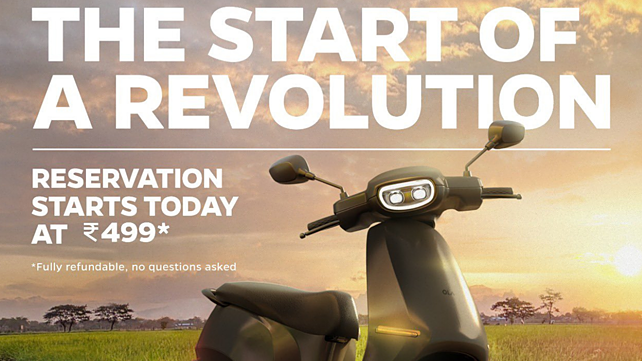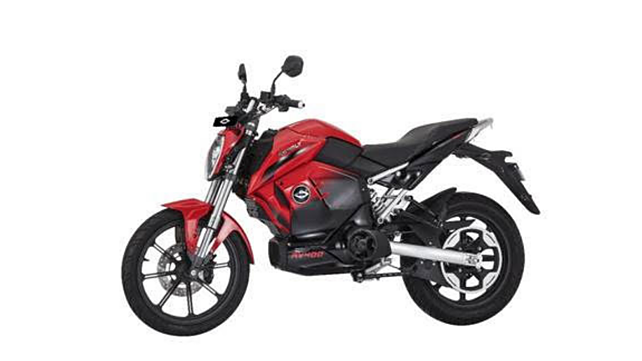
With major announcements from state and central governments on the subsidy of electric two-wheelers, many start-ups and companies are lining up their launch to sail along with the tide and gain momentum on sales numbers.
Apart from the timing of the launch, many start-ups are trying to imitate mobile handset manufacturers’ marketing strategy by creating hype before the launch with low pre-booking amount, and some are declaring themselves sold-out after the minutes of opening of sales of their products.
However, this looks exciting and music to the ears, but traditionally purchasing automobiles is more about touch, feel, experience, need and aspiration.
To give a perspective, Ola Electric opened pre-booking for INR 499 refundable deposits, which garnered one lakh bookings (more than thrice of the electric scooter in FY21). Similarly, Revolt Motors, backed by Rahul Sharma, who happened to be the founder of Micromax Mobiles, has announced various times that they have sold out certain batches after opening bookings for few days.
Experts term it as “Hype Marketing,” which means “extravagant or intensive publicity or promotion,” according to its actual book definition. It is supposed to create curiosity, interest, and awareness. In the traditional AIDA - Attention, Interest, Desire, and Action model, it helps in “awareness” and “interest.”

Many brand consultants and marketing pundits speak in favour of creating hype to create awareness, pull audience and generate sales. However, few experts are still sceptical that it would really work in the automotive sector, which is the most accountable and organised sector across industries.
Hype marketing works for any sector in any market as long as it is used merely as a ‘precursor’ to an event/milestone/initiative/launch rather than become the entire event itself, said Avik Chattopadhyay, Co-creator of Expereal India.
Recalling the Maruti Suzuki creating hype of the launch of Swift before eight to ten months, Chattopadhyay added, One Plus (Mobile Handset company) created hype about the brand launch on digital quite a few weeks before it happened. Even the OTT series “Paataal Lok” had created hype around it before its release. The key is that the hype led to the final on-ground demonstration that justified the hype.
Mobile handset experts whom Mobility Outlook spoke to said hype marketing worked well in the sale of mobile phones because of multiple reasons. One of the vital reasons is that when Chinese players like Oppo and Vivo entered India with deep pockets, they invested hugely to enhance their online presence.
They offered discounts, no-cost EMI and gave features of high-end phones at an affordable range.
Click 2 Buy
At the same time, e-commerce companies Flipkart and Amazon were also in their scaling stage. Mobile phones being high ticket items helped them increase gross merchandise value (GMV), promoted mobiles on the home page, and did exclusive tie-ups with certain brands to push customers to buy online. This is the reason for about 54% of mobile phones are expected to sell online this year.
On the contrary, the vehicle makers, especially in the two-wheeler segment, the traditional players such TVS, Hero MotoCorp, Yamaha, Suzuki, and HMSI partnered with Paytm, which offered cost-effective credit card-led EMI payment but did not find many takers.
It can work well for existing products and brands, but not for any new product by a new brand that is not even launched. “The first step is to establish a brand and the product. I have seen so many bookings in my career unless the booking is not of high amount. I don’t think it will hold much relevance. There is no proportion between the vehicle’s booking amount and actual cost,” said Arun Malhotra, Industry Veteran and Former MD, Nissan Motor India.
Recalling his early days, he said LML was the new company that made a record by booking 22 lakh scooters amounting to INR 110 crore in 1984. But during that time, scooters used to sell at a premium and the scenario was different from now. However, for bookings which are happening today will translate to actual sales. It's a long call.
Harish Bijoor, Founder of Harish Bijoor Consultants, argued that hype marketing will work in the automotive space too, as companies are moving on the fast track towards Direct to Consumer (D2C). For example, mobile phones are sold online in this space, but a few years back, it was unimaginable to buy a mobile phone for INR 20,000 online.

“The idea was that any high ticket item was bought after seeing it. That paradigm is broken as now everyone is buying mobile phones online. Now it will go to a higher price for a scooter and maybe the day after tomorrow people will start buying cars online. So automotive marketing would soon resemble mobile phones marketing.” he added.
Resonating with Bijoor’s perspective, Vinay Piparsania, Chief Executive Officer, IIT Delhi Endowment Management Foundation, said that social media has evolved, and the amount of information available is ample. Moreover, this kind of activity catches up with the trend more than in the times when only other mediums of marketing were available to us. So this is an effective way to gauge interest.
However, he also cautioned that companies need to focus on delivering quality products.
Product Is the King
Product is the king. Bijoor said if the product is not right then, the companies need to be careful. It should be of superior quality. Else, the party will only last for a year.
Similarly, Chattopadhyay pointed out. “It is all about the actual delivery of your hyped-about promise. If that does not happen, then you are finished as a brand. Your credibility keeps diminishing with every next initiative you take. Micromax is a good example, across phones to TVs and now with Revolt.”
He also recalled the failure of the Nano. It is a sad case of being a capable vehicle living up to all the hype but terrible positioning and customer targeting. Unfortunately, there are many more cases of trusted brands where the final delivery failed to live up to the hype. Even Toyota delivered a dud with the Etios.
Lastly, experts say that the simple lesson to learn is not to have delusions about a brand when serving customers. The age-old strategy of under-promising and over-delivering still works, whatever be the category, customer segment, market or country.